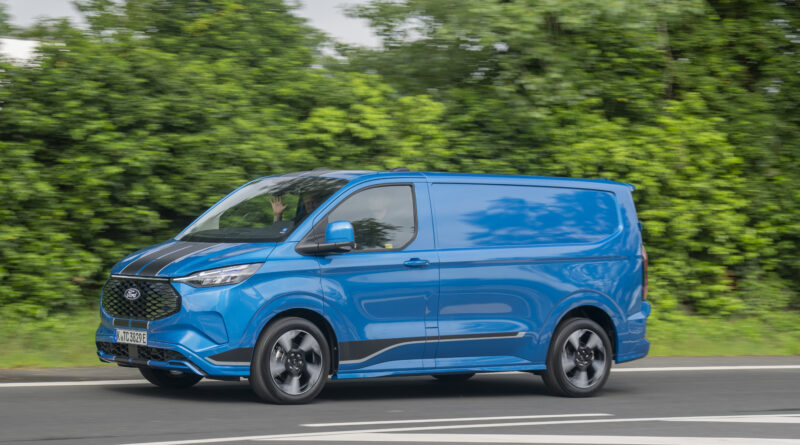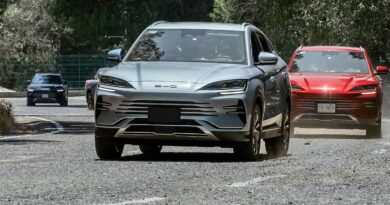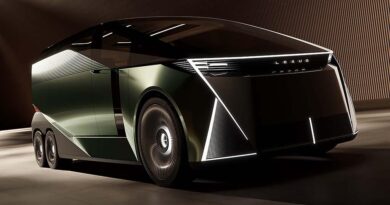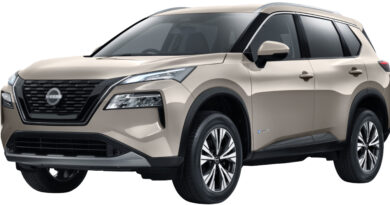2024 Ford E-Transit Custom review: Is this the electric van to tempt delivery drivers out of their Toyota Hiaces?
If Ford has its way your next courier package or flower delivery could arrive in zero emissions near-silence in the E-Transit Custom.
The car making giant that leads the ute market with its Ranger is hoping to shake up the van market with its new E-Transit Custom, an all electric version of the popular commercial van that sits below the larger E-Transit (minus the Custom moniker).
Landing in dealerships late in 2024 – and months after the soon-to-arrive diesel-powered Transit Customs – the E-Transit Custom adds to the growing options in the commercial van market.
The E-Transit Custom gets a unique grille that marginally improves aerodynamics and helps the EV version stand out but otherwise uses the same body as the regular Transit Custom.
READ MORE: Riding along in Ford’s insane Supervan Transit
READ MORE: Behind the wheel of Ford’s (bigger) E-Transit
It also comes with the same 6.8-cubic metre load area of the long wheelbase model (short wheelbase models will be diesel only in Australia), making it a match for fossil-fuelled versions of the Toyota Hiace and Hyundai Staria as well as an electric rival in the LDV eDeliver 7.
The E-Transit Custom is less than two metres in height, allowing easy access to underground carparks, but Ford will also offer a high-roof version with 9.0 cubic metres of load capacity.
2024 Ford E-Transit Custom: what we think
The E-Transit Custom Powered by a single electric motor making 160kW and 415Nm, more than the 125kW/390Nm of the diesel-fed offerings.
Its 64kWh battery is claimed to provide up to 337km of WLTP range between charges.

So while it won’t be charging between capital cities as easily as a diesel, Ford says the E-Transit Custom easily suffices the daily needs of predominantly suburban-based van drivers, with close to 300km of real-world ability.
Charging can be done at to 11kW at an AC outlet for a full charge in as little as 6.7 hours, or about 10 hours using a more common 7.4kW wallbox.
DC fast charging can be done at up to 150kW for a 0-80 per cent top-up in 39 minutes.
The E-Transit Custom also makes few compromises on the load-carrying front.
With the batteries stuffed in the floor the load area is identical, at 6.8 cubic metres, or 9.9 cubic metres if you choose the high roof version.
The payload shrinks by a couple of hundred kilograms but at up to 1011kg it’ll tick the box for most uses.
The 2300kg tow capacity, too, may be 200kg shy of the diesel Transit Custom, but it still thoroughly acceptable and adds to the van’s talents; how much a trailer eats into the driving range will depend on what you’re towing, especially its aerodynamic efficiency.
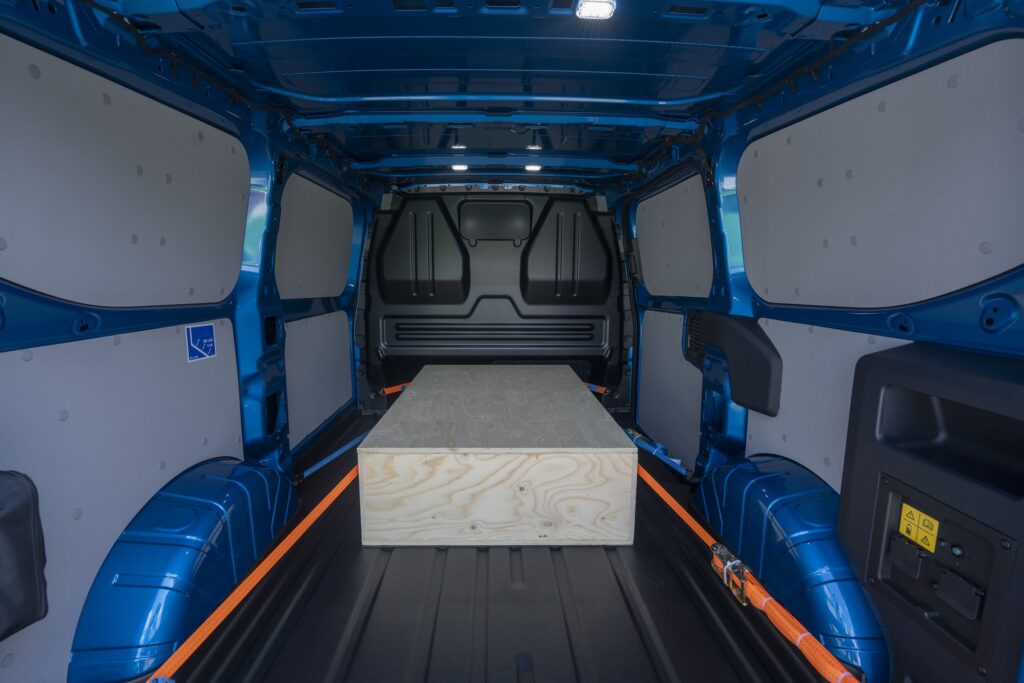
Long wheelbase versions of the diesel-powered Transit Custom start from $57,590 before on-road costs.
Ford Australia will announce pricing of the E-Transit Custom closer to its late-2024 arrival, but assuming a similar 15 per cent price premium as applied in the UK market would land it somewhere below $70K.
As with the regular Transit Custom there will be the latest tech, including a digital instrument cluster and 13-inch infotainment screen, as well as FordPass remote app connectivity and over-the-air software update functionality.
There will also be telematics that allow fleet operators to monitor the vehicle remotely.
The latest safety tech is also part of the deal, including exit warning that can alert operators to vehicles and bikes approaching from behind.
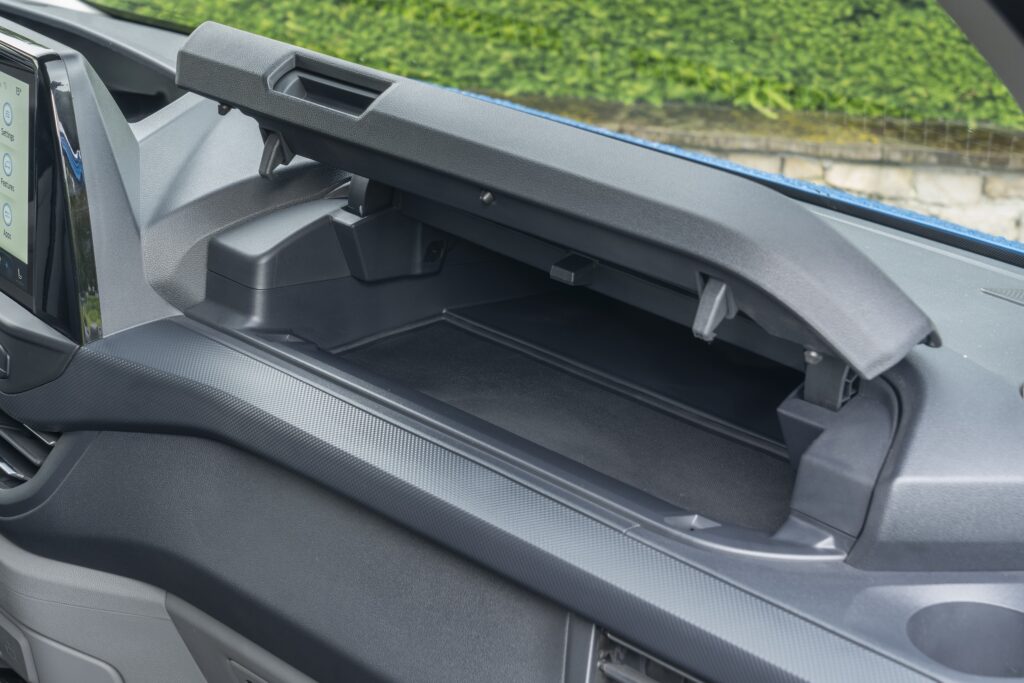
The passenger airbag is even incorporated into the roof to free up dash space for a second glovebox, one of numerous storage binnacles peppered around the cabin.
It’s indicative of the cleverness engineered into the cabin.
The steering wheel is another example. It tilts upwards to convert into a table for doing work or having a bite while out on the road.
The door pockets are a work of art, too: there are three layers with pockets of varying sizes ready to store whatever it is you need along for the ride.
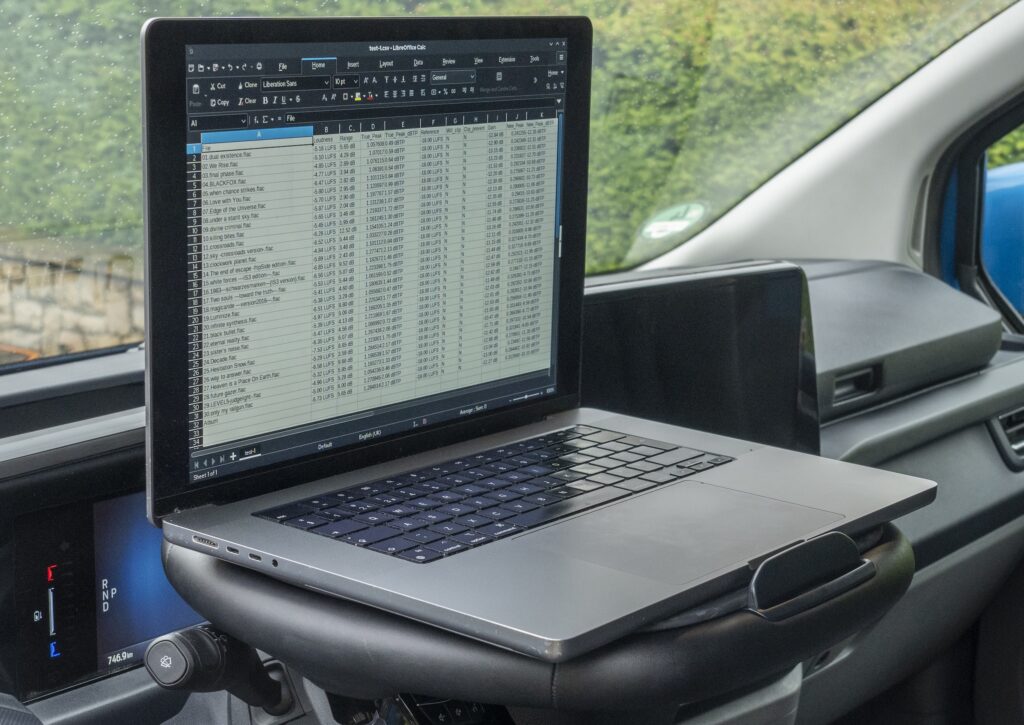
Along with various USB power outlets – and the option of a vehicle-to-load AC power outlet – it’s a van beautifully set up for working life.
The Custom’s three-seat layout also works nicely, in part because there’s a fully flat floor.
It means the person in the centre isn’t shortchanged on foot space. Perhaps more usefully, the driver can slide across to the passenger side if they want to exit via the opposite door.
Plastics are hardy and old school generic, but there’s a sense they’ll deal well with the rigours of van life.
A deep binnacle on top of the dash is perfect for papers or tablets and the doors have a slim upper pocket on top of the deeper lower binnacle that’s ready for the largest bottles you can find.
Cupholders on either side of the dash are much smaller.
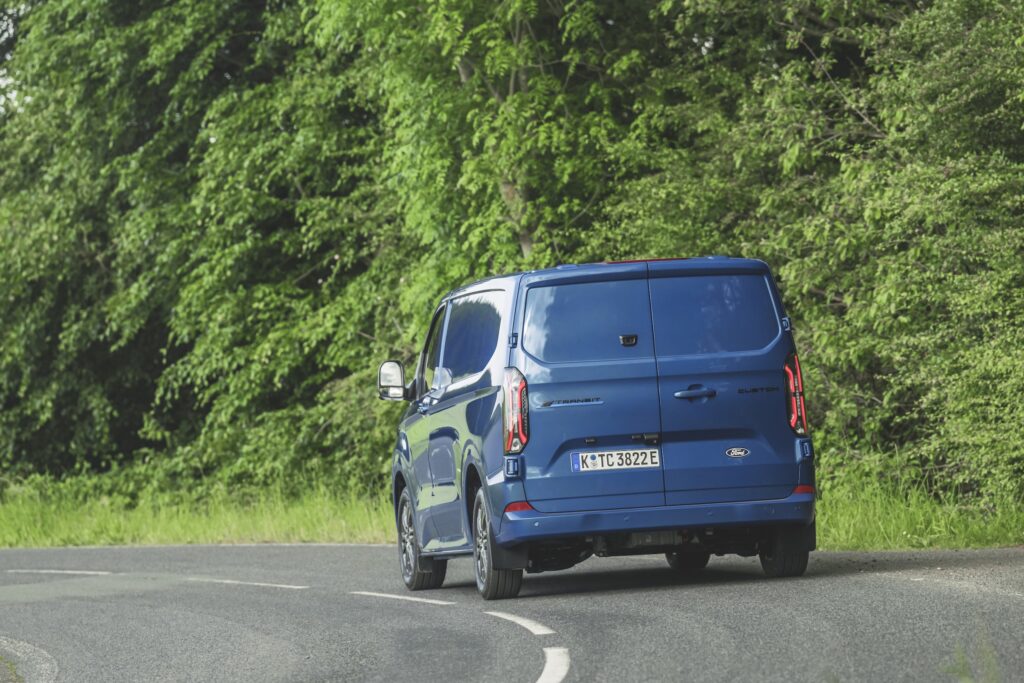
On the road the E-Transit Custom is a van revelation in the way it drives.
The easy access to effortless electric pulling power makes it a superior around-town accompaniment than a diesel engine with eight-speed auto that is also available in the Transit Custom.
The E-Transit is zippy and responsive, with ample thrust when it’s needed, even with half a tonne of load on board as was fitted to our test vehicle.
Driving the rear wheels, too, makes getting power to the ground easier when accelerating at low speeds.
An Eco mode is designed to stretch the driving range, although it reduces the peak power by around 40 per cent, which can leave you short occasionally in everyday driving.
Sport mode makes the throttle more sensitive, but it can be a tad too aggressive, making Normal mode the most useful.
A German autobahn allowed us to establish the E-Transit Custom is speed limited to an indicated 134km/h, which shouldn’t pose issues for even the most eager van drivers Down Under.
As with latest iteration of the Transit, the E-Transit Custom is well sorted dynamically, in part because of fresh underpinnings and its independent rear suspension system.
It feels planted on the road and has nicely weighted steering.
There’s some road noise at speed and the occasional thunk over big bumps, but it’s well controlled and compliant, adding to the comfort levels for those who spend their day on the road.
2024 Ford E-Transit Custom: verdict
It adds up to a van that makes plenty of sense against the traditional diesel alternatives – if the price is right.

That’s a crucial piece of the puzzle because with an emphasis on total cost of ownership the forecast lower running costs will have to offset the initial outlay if electricity is the next big thing in commercial vehicles.
For those who don’t need to travel upwards of 300km daily, the E-Transit Custom delivers with a terrific driving experience, well thought-out cabin and excellent load-carrying credentials.
Score: 4/5
Ford E-Transit Custom specifications
Price: About $70,000 (estimated)
Basics: EV, 3 seats, 5 doors, van, RWD
Range: Up to 337km
Battery capacity: 64kWh
Battery warranty: 8 years/160,000km
Energy consumption: NA
Motors: 1 rear 160kW/415Nm
AC charging: 11kW, Type 2 plug
DC charging: 125kW, CCS combo plug
0-100km/h: NA

